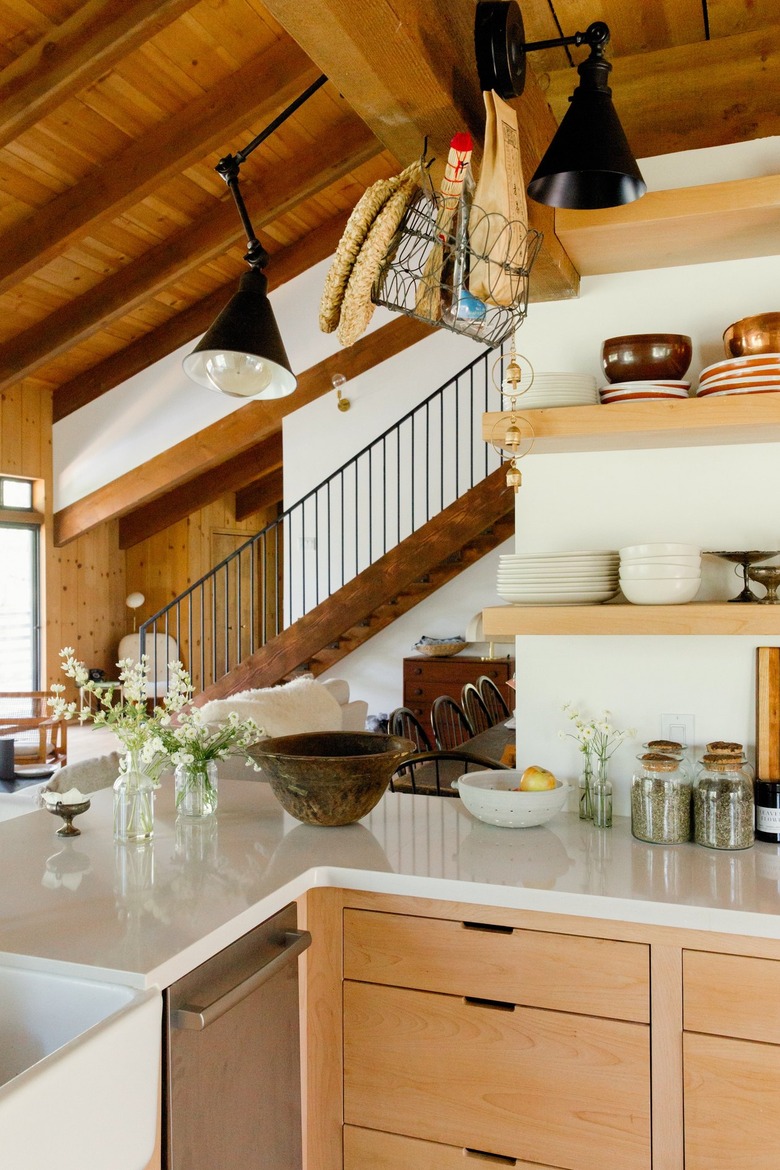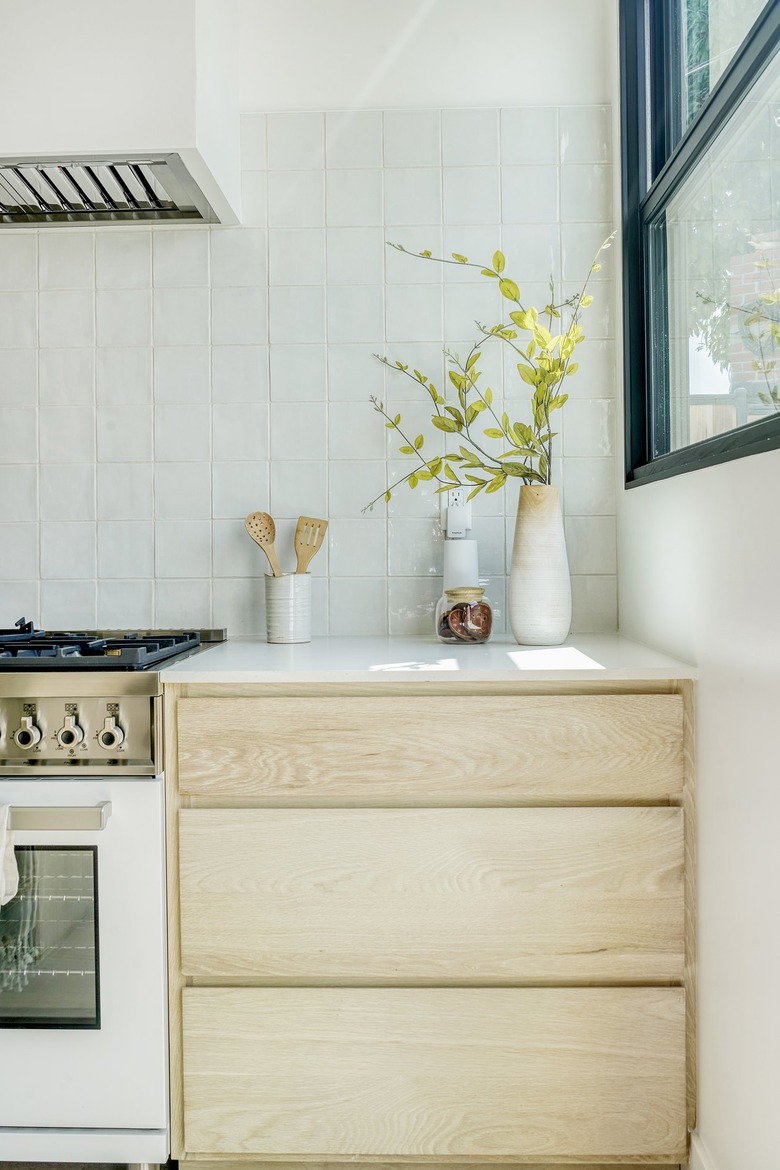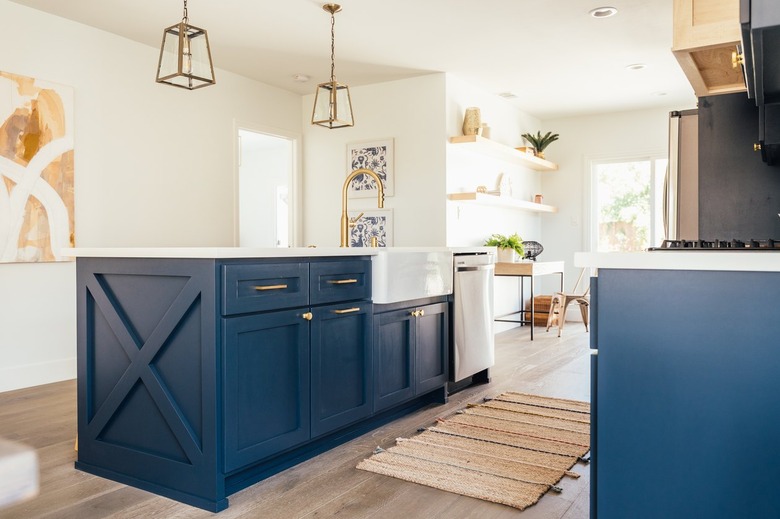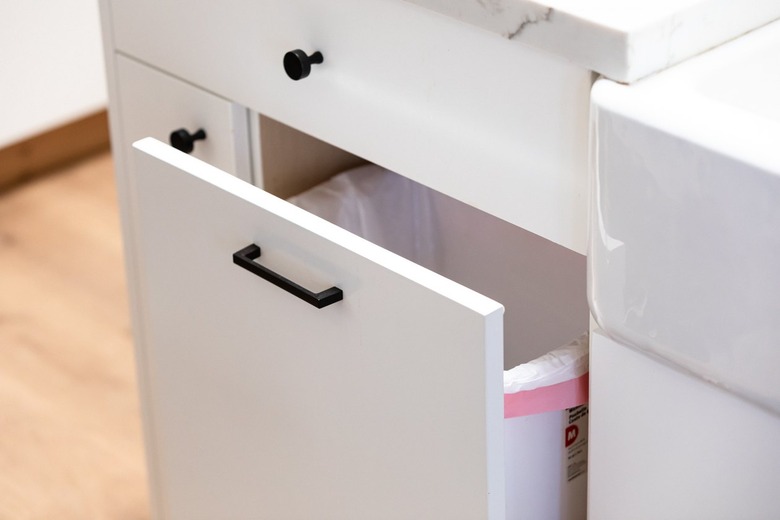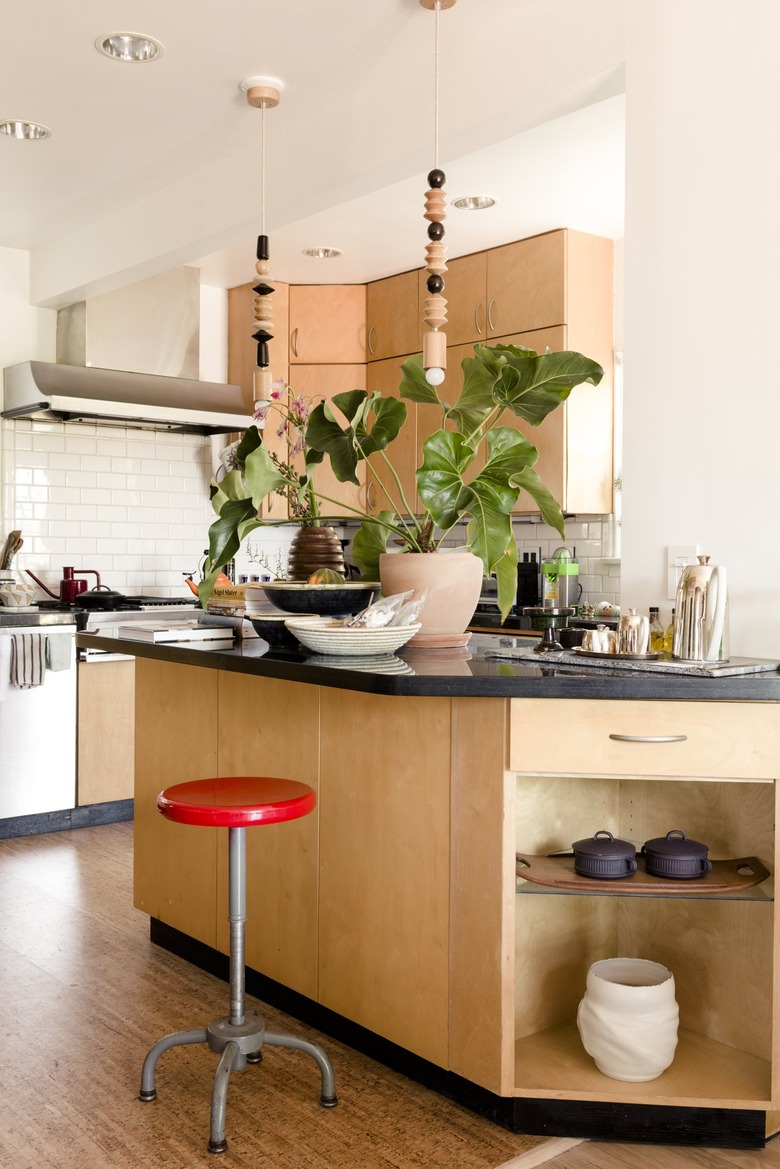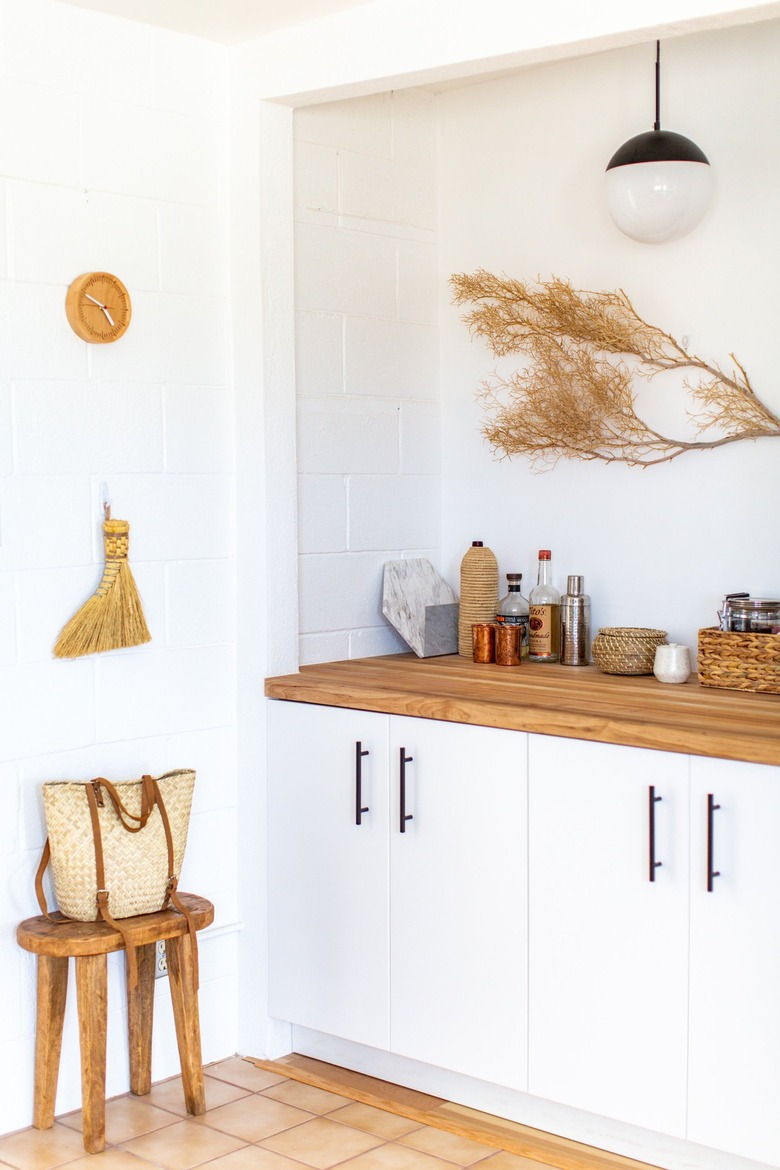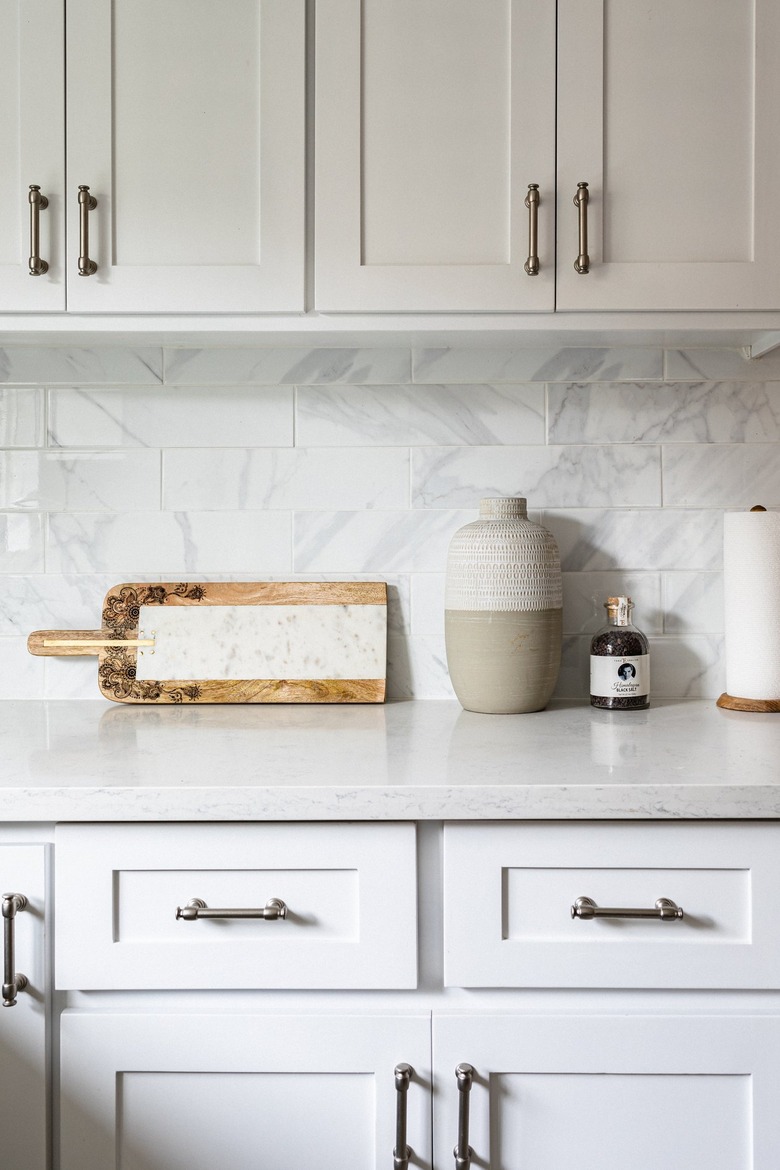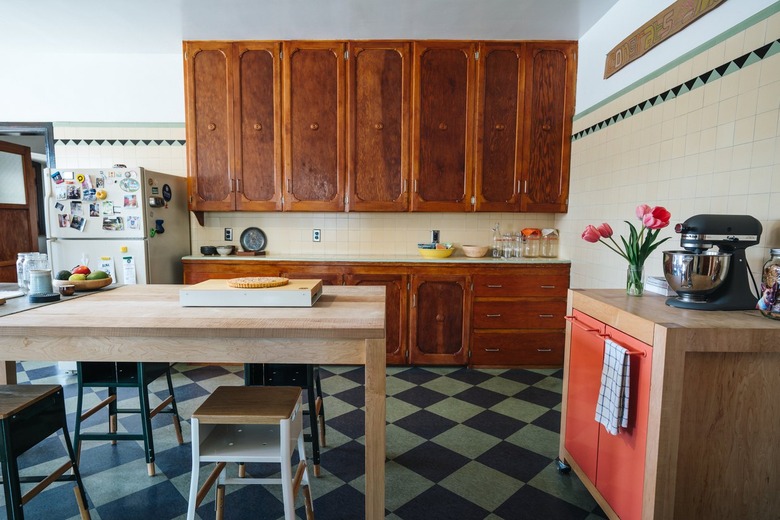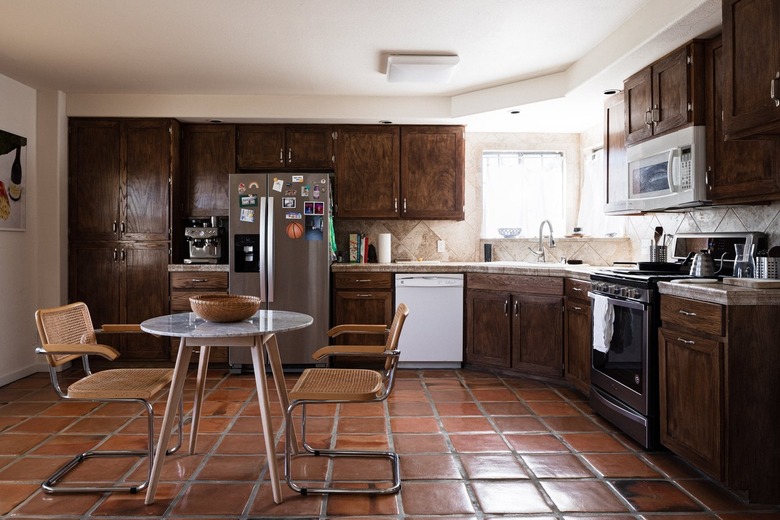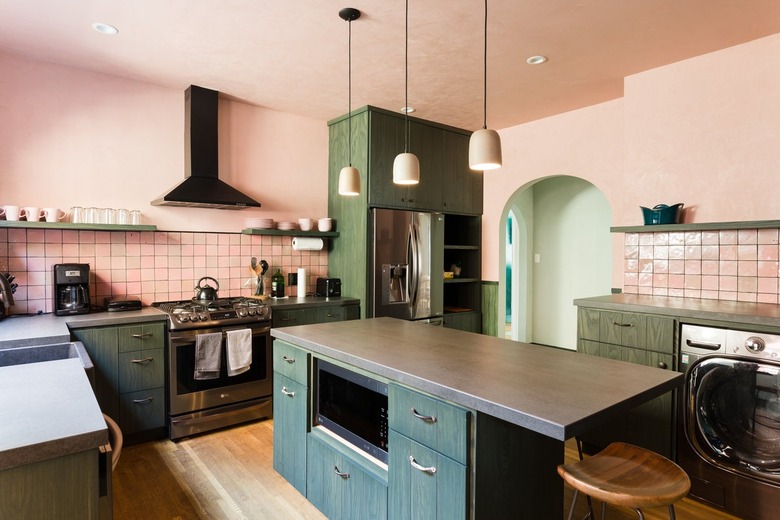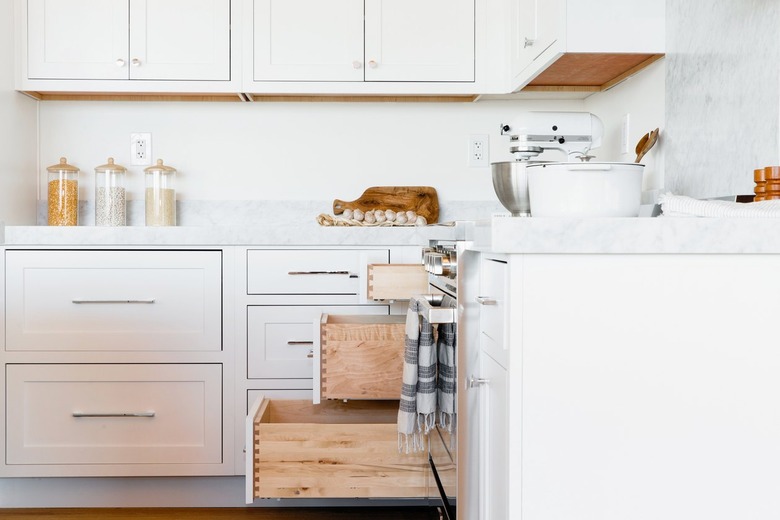How Much Do Kitchen Cabinets Cost? Here's What You Should Know
There are few things more important the upper and lower cabinets during a kitchen renovation or new construction project. Not only do they form the bulk of a cook space, but they also take up a large part of the kitchen remodel budget — sometimes as much as 25% of the overall cost. Fortunately, there is a wide variety of price points based on the type of cabinets you select. This guide will cover the overall cost of kitchen cabinets and what you can expect to spend when it comes to installation.
Tip
Kitchen cabinets generally cost $150 to $300 for stock cabinets and $300 to $650 for semi-custom cabinets per linear foot, installed.
Kitchen Cabinet Types
Kitchen Cabinet Types
Kitchen cabinets fall into four broad categories: RTA, or ready-to-assemble cabinets, stock cabinets, semi-custom cabinets, and custom high-end cabinets. There's also the option to reface or refurbish your existing units so they look almost new again.
Kitchen cabinet systems are formed largely by base, wall, and tall cabinets. Base cabinets are the lower forms on which countertops, sinks, and cooktops rest. Wall cabinets are attached above the base and are somewhat shallow. Tall cabinets rest on the kitchen floor but do not hold countertops. The most notable type of tall cabinet is the pantry — a narrow cupboard that often reaches as high as the ceiling.
Kitchen Cabinet Pricing Methods
Kitchen Cabinet Pricing Methods
Before choosing the best cabinets, you'll need to look closely at the cost. There are lots of variables, but mainly you need to think about whether it's cheaper to custom build or buy premade. If you think of it as a spectrum — with stock or ready to assemble on the least expensive side and custom on the most expensive — you will almost always pay more when building versus buying. According to HomeAdvisor, you can expect to spend $3,000 t0 $8,000 for new units depending on your kitchen size, the hardware you choose, and the style.
Generally, cabinets are often priced per linear foot, which is the length of space they occupy. The depth of base and wall cabinets does not come into play since this is a standard measurement for most cabinets — usually 24 inches for the former and 12 inches for the latter.
An 8-foot-long wall entirely occupied by cabinets equals eight linear feet. Measure base and wall cabinets separately and add them together to determine the overall linear footage. Prices for similarly sized base and wall cabinets will differ. The former costs more due to the greater quantity of materials required for manufacturing.
The countertop material completes the cabinets. You must include the cost of that as well as fabrication and installation when making your total home improvement budget calculations.
Labor for kitchen cabinet installation is generally separate from the cost of materials. The price can range widely and is based on the contract you negotiate with the contractor or installer. Labor may run between $50 and $250 per linear foot. If the installer is required to assemble the cabinets, assume that the costs will be on the higher side of the spectrum. Removing existing cabinets will add to the cost of the project. If you decide to forgo professional help and install your own cabinets instead, the price will significantly decrease.
Another standard pricing method accommodates the 10 x 10-foot kitchen mockup. The L-shaped cabinet footprint lends itself well to this sizing system: One stretch of base cabinets connects to a shorter stretch. This formation can contain the sink, dishwasher, backsplash, and a cooktop or stove. The mockup helps consumers see how different cabinet doors affect the price of the cabinets.
Some online sources simply show a photo of a door style and a quoted price for that style in a typical 10 x 10 kitchen. The cost given is for the cabinets only and does not include the other items. Be aware that once you start adding hardware, storage accessories, and more, the final cost is likely to increase over the base quote.
RTA Kitchen Cabinets
RTA Kitchen Cabinets
- Average cost: $120 to $250 per linear foot, installed
RTA, or ready-to-assemble kitchen cabinets, are flat-packed and delivered directly to you. The flat boxes are typically easy to unpack. You or your contractor must put everything together before installation. Cam-lock fasteners join the flat pieces to form the cabinet boxes. Special carpentry skills are not necessary, and cutting is rarely ever required. The tools are few and basic. And typically, they are included.
If you have to pay for shipping, freight costs for RTA boxes are usually less expensive than those of fully assembled cabinets. Some RTA companies will assemble the cabinets for you prior to shipping. Generally, be prepared to add another 50 – 100% of the cost if you opt to have the RTA company assemble the cabinets. Expect to have your units delivered to you within two to four weeks. If you are shopping at a high quality brick-and-mortar store, you can usually take the RTA cabinet boxes with you from in-store stock.
Stock Kitchen Cabinets
Stock Kitchen Cabinets
- Average cost: $150 to $300 per linear foot, installed
Most stock cabinets are already assembled in a limited variety of standard sizes, styles, and colors. They're usually on the shelves of large home stores and warehouses. If not on hand in store, these units can usually be ordered and delivered fairly quickly due to their popularity and availability.
Only a select number of add-ons or special amenities are available with stock kitchen cabinets. And they tend to be limited to base and wall units with few if any floor cabinets, blind cabinets, pull-outs, and sliders.
This variety tends to be best suited for smaller or basic kitchens in primary residences. They are also suitable for kitchens in cottages, cabins, apartments, condos, or in any situation where strict budget control is necessary.
Semi-Custom Kitchen Cabinets
Semi-Custom Kitchen Cabinets
- Average cost: $300 to $650 per linear foot, installed
For the most part, semi-custom kitchen cabinets represent the middle ground. They give you the chance for customization and personalization. Once you settle on a cabinet line from a limited number of options, you can pick sizes, door and drawer styles, colors, finishes, hardware, and materials. You can even add extras such as innovative storage solutions and choose options like roll-out shelves, cabinet lighting, decorative molding, and other features that best integrate with the overall kitchen design.
In most cases, semi-custom cabinets provide durability and a near-custom look without the higher prices associated with going custom. Your order will be assembled in the manufacturer's factory and shipped to you. Expect a lead time of six to eight weeks for your order to be filled.
Materials are often a major cost driver with semi-custom cabinets. As the home and renovation experts at Old House Journal note, this category is where you can expect to find cabinets constructed with 1/2-inch-thick cabinet-grade plywood, which is higher quality and has a steeper cost than cabinets built of medium-density fiberboard. Thermofoil — a thin cover applied by heat — and laminate veneers are less expensive than wood veneers or solid wood. Plus, basic styles like Shaker and slab tend to be more cost-effective.
Custom Kitchen Cabinets
Custom Kitchen Cabinets
- Average cost: $500 to $1,400+ per linear foot, installed
As the name implies, custom cabinets are made to order according to the specifications of your particular kitchen space. You start from a blank slate and, with the cabinetmaker's help, select every element, including the use of a domestic species of wood like walnut, birch, or maple and exotic woods like mahogany. Domestic oak, according to the Wood Database, is one of the most popular species of wood for cabinets because of its low cost, density, and availability.
Many cabinetmakers are true artisans, but be sure to see examples of the shop's work and talk to previous clients to determine who will craft your new kitchen addition.
Custom work requires time, so expect to wait at least eight to 10 weeks before the units are ready for installation. In many cases, expect even more time depending on the cabinetmaker's current workload.
Refaced Kitchen Cabinets
Refaced Kitchen Cabinets
- Average cost: $115 to $275 per linear foot, installed
Like we mentioned, you could spend at least $3,000 to replace your kitchen cabinets depending on which approach you take. If you want to keep your budget smaller, refacing them is a huge cost saver. This method is an increasingly popular alternative to buying new. As long as the cabinet boxes are structurally in good shape, refacing can return them to near-new condition. Due to the complexity of the project, cabinet refacing rarely lends itself to DIY work. Instead, technicians come to the home and do all of the work in the kitchen or nearby work areas.
Refacing encompasses two main aspects: veneering the cabinet boxes and replacing the doors and drawer fronts. An ultra-thin wood or laminate veneer is glued to the outside of the boxes, on the sides, and on the front. Usually, the insides are not included in the process.
The doors and drawer fronts are typically removed and replaced. But sometimes, in the case of slab cabinet doors, the apertures can be veneered as well.
Cabinet refacing is an option only when the units are already in good working order. For wall cabinets, the boxes must be solid and soundly attached with straight, unbowed shelves. Base cabinets should be sturdy. If the cabinets have ever experienced water damage, they may not be good candidates for refacing.
This is also considered an eco-friendly option since fewer materials are sent to the landfill. One way to shave costs for cabinet refacing is to use laminate veneer instead of real wood veneer and to reuse any desirable cabinet fixtures.
Mistakes to Avoid
Mistakes to Avoid
No matter how much you want to spend and what kind of kitchen cabinets you chose to go with, adding them will be a big investment. Accordingly, you want to get them right so they last for years to come. What you save now may impact on how much maintenance the cabinets will need in the future. So first, take a good hard look at your overall budget and make sure you allot enough.
Avoid common mistakes like picking kitchen cabinet styles that have too much detail or overlays. They may look fabulous in a catalog or showroom but could feel cluttered and dated in your space. They are also harder to keep clean. Edges and nooks can trap grease, food, and dirt. The simpler and more streamlined the design, the easier it will be to keep tidy.
Don't add too much of a single cabinet color. An excess of a dark hue may make your kitchen feel closed in, and an overabundance of white can make things seem bland. And remember, a color that is on trend at the moment could look dated sooner than you think. Stick with neutrals and timeless designs that you can picture living with for years to come.
If you're going with stock cabinetry in particular, think about your storage needs before purchasing. You could get stuck with ill-fitting drawers and cupboards that become a nuisance day after day. Investing a bit more in some custom solutions will ensure you get exactly what you need where you need it.
Many of us assume that cabinets that cost more are just better. This isn't necessarily the case. Research exactly what you're actually paying for. If a certain wood isn't native to where you live, you may spend too much on transport without really getting a higher quality product. Consider looking at units made of materials that are locally sourced.
